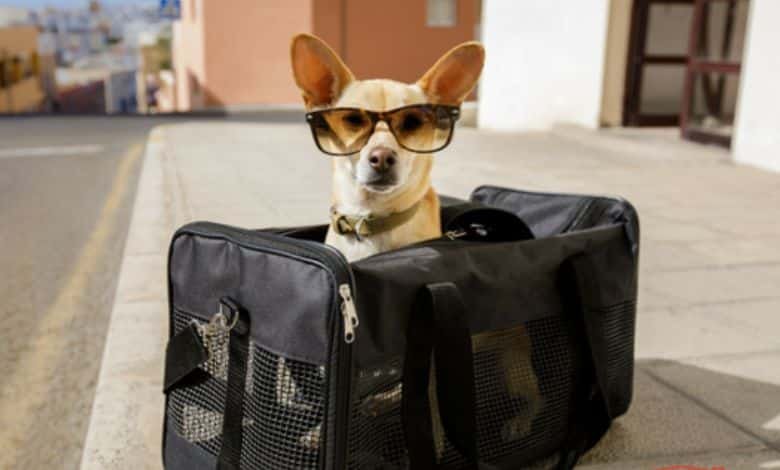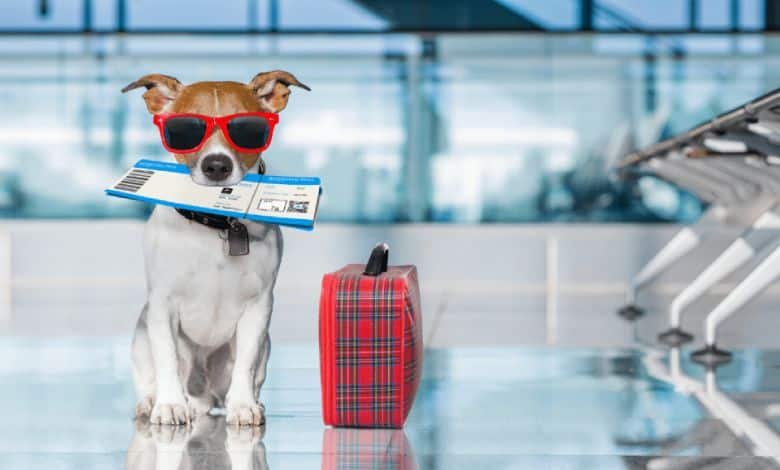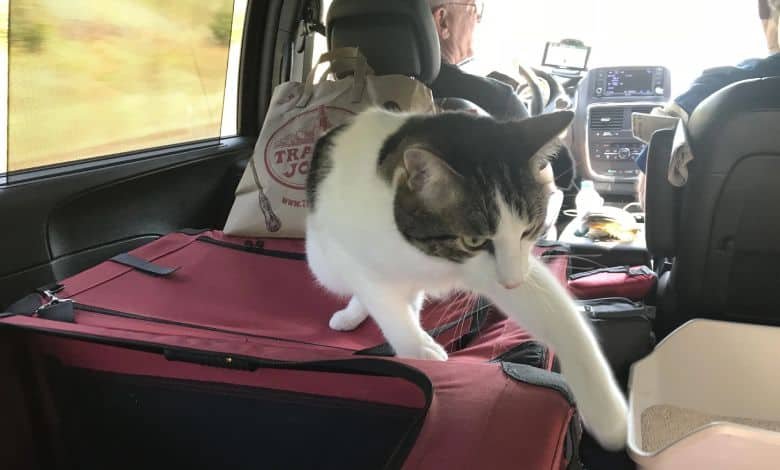Moving to a new home is a significant life event, a complex ballet of logistics, planning, and emotion. For pet owners, this complexity multiplies. Your furry, feathered, or scaled family members can’t pack their own boxes or understand the reason for the sudden upheaval. Their entire world depends on you to make the transition safe, comfortable, and as stress-free as possible. The challenge of moving pets across country is one of the most common concerns we hear from clients at Top Town Movers, especially those planning a long-distance move from our home base in North York, Ontario.
This comprehensive guide is designed to be your ultimate resource. We’ll break down every step of the process, from the initial veterinary check-up to helping your pet settle into their new home. While our expert teams handle the logistics of your household goods with our premier long-distance moving, packing, and storage services, this guide will empower you to manage the most precious cargo of all: your beloved companion.
- Learn More >>>>10 Tips for Moving With Kids Without a Hitch
Section 1: The Foundation – Planning and Preparation (3-6 Months Before the Move)
Success in moving pets across country is built on a foundation of meticulous planning. The moment you know a long-distance move is in your future, your pet’s journey should become a primary focus.
The Non-Negotiable Vet Visit
Your first stop should be your trusted veterinarian. This visit is about much more than a simple check-up; it’s the cornerstone of a safe move.
- Comprehensive Health Check: Ensure your pet is physically fit for the journey. A cross-country trip can be strenuous, especially for senior pets or those with pre-existing health conditions. Discuss any concerns you have with your vet, such as motion sickness or anxiety.
- Vaccination Records and Health Certificates: Obtain a complete copy of your pet’s vaccination history. More importantly, you will likely need a Certificate of Veterinary Inspection (CVI), often called a health certificate. This document, signed by a licensed veterinarian, certifies that your pet is healthy and up-to-date on its vaccinations (especially rabies). While requirements for moving between Canadian provinces are generally straightforward, having a CVI issued within 10-30 days of your travel date is a best practice and may be required by certain carriers or building management at your destination.
- Microchip Verification: If your pet is microchipped, now is the time to verify that the contact information is current. Your new address and phone number must be updated in the microchip registry. If your pet isn’t chipped, this is the perfect opportunity to do it. A microchip is the most reliable way to be reunited with a lost pet, a risk that unfortunately increases during the chaos of a move.
- Medication and Anxiety: Discuss travel anxiety with your vet. They can offer advice on calming aids, from pheromone sprays (like Feliway for cats or Adaptil for dogs) to prescription sedatives. A crucial word of caution: Vets often advise against sedating pets for air travel, as it can interfere with their ability to regulate breathing and body temperature at altitude. Never administer any medication without explicit veterinary guidance. Ensure you have an ample supply of any regular medications your pet needs to last through the move and until you can establish a relationship with a new vet.

Researching Regulations: Provincial and Municipal
Canada is quite pet-friendly when it comes to interprovincial travel for common household pets. However, it’s wise to do your due diligence.
- Provincial Rules: Check the official government websites for both your departure province (Ontario) and your destination province. They will have the most current information on any regulations regarding the “import” of domestic animals.
- Municipal Bylaws: Your new city or town may have specific rules. These can include leash laws, pet licensing requirements, and, importantly, restrictions on certain breeds (e.g., pit bull-type dogs).
- Housing Rules: If you are moving into an apartment, condominium, or a community with a homeowners’ association (HOA), double-check their pet policy. They may have restrictions on the number, size, or breed of pets allowed.
- Learn More >>>>How to Pack for a Move
Choosing Your Method of Transport: Ground vs. Air
This is the most significant decision you’ll make when moving pets across country. Each method has distinct pros and cons.
- Ground Transportation (Driving): This is often the preferred and least stressful method for pets.
- Pros: You remain in complete control. Your pet stays with you, reducing separation anxiety. You can stop as often as needed for potty breaks, meals, and exercise. It’s generally more cost-effective, especially if you have multiple pets.
- Cons: It’s a significant time commitment. A drive from Ontario to British Columbia can take several days, which can be exhausting for both you and your pet. It requires careful planning of a pet-friendly route.
- Air Transportation: This is the fastest option but can be more complex and stressful for your animal.
- Pros: It dramatically reduces travel time. For a move from coast to coast, it’s a matter of hours versus days.
- Cons: It can be extremely stressful for animals due to unfamiliar sounds, temperatures, and pressure changes. There are risks associated with placing pets in the cargo hold. Airlines have strict regulations, including breed restrictions (especially for brachycephalic or “snub-nosed” breeds like Pugs, Bulldogs, and Persian cats), and weather embargoes (they won’t fly pets in extreme heat or cold). It can also be very expensive.
Section 2: The Journey by Road – A Detailed Itinerary
If you’ve chosen to drive, your focus should be on safety and comfort. This is where the long-distance expertise of a company like Top Town Movers becomes invaluable. By letting us handle the packing, loading, and transport of your belongings, you can dedicate your full attention to navigating the open road with your pet.
Step 1: Secure Your Pet Safely in the Vehicle
An unrestrained pet is a dangerous distraction and is at extreme risk of injury in a sudden stop or accident.
- Crates and Carriers: The safest way for any pet to travel is in a well-ventilated, appropriately sized carrier or crate. The pet should have enough room to stand up, turn around, and lie down comfortably. Secure the crate in the back seat or cargo area using seatbelts or straps to prevent it from sliding.
- Harnesses: For dogs, a crash-tested safety harness that attaches to a seatbelt is another excellent option. It provides security while allowing a bit more freedom than a crate. Never attach a tether to a dog’s collar, as this can cause neck injury or strangulation.
Step 2: Acclimatize, Acclimatize, Acclimatize
Do not make moving day the first time your pet experiences a long car ride in their carrier.
- Positive Association: Weeks before your move, place the carrier in your living room with the door open. Put comfortable bedding, favorite toys, and occasional treats inside. You want your pet to see it as a safe, personal den, not a prison.
- Short Trips: Start with short drives around the block. Gradually increase the duration of these trips, always ending with a positive reward like a treat or playtime. This helps desensitize them to the motion and sounds of the car.

Step 3: Pack the Ultimate Pet Travel Kit
Keep a dedicated bag in the car with everything your pet will need, easily accessible at all times.
- Food and Water: Pack enough of their regular food for the entire trip, plus a few extra days’ worth. Abruptly changing your pet’s diet can cause digestive upset. Bring plenty of fresh water from home or bottled water. Collapsible silicone bowls are a space-saving essential.
- Medications: All prescription medications, plus a pet-specific first-aid kit.
- Comfort Items: Their favorite bed, blankets, and a few cherished toys. The familiar scent will be a great source of comfort.
- Essentials: Leash, harness, collar with ID tags, poop bags or a disposable litter box with a small bag of litter for cats.
- Paperwork: Keep the CVI, vaccination records, and a recent photo of your pet in a waterproof folder.
- Cleaning Supplies: Paper towels, wet wipes, and an enzyme cleaner for any accidents.
Step 4: Plan a Pet-Friendly Route
- Book Accommodations: Identify and book pet-friendly hotels or motels along your route in advance. Don’t assume a hotel chain’s policy is universal; call individual locations to confirm. Be aware of any pet fees or restrictions.
- Map Your Stops: Plan to stop every 2-4 hours for about 15-20 minutes. This allows your dog to stretch their legs and relieve themselves, and it gives cats a chance to use a litter box in the car. Look for rest areas, parks, or quiet side roads.
Step 5: Best Practices on the Road
- Feeding: Feed your pet a light meal a few hours before you start driving for the day to minimize motion sickness. Provide small amounts of water at stops.
- NEVER Leave Your Pet Unattended: This is the golden rule. A car’s interior temperature can skyrocket to deadly levels in just minutes, even on a mildly warm day with the windows cracked. When you stop for meals, use a drive-thru or find a restaurant with a pet-friendly patio.
Section 3: The Journey by Air – Navigating the Skies
If air travel is your only option, rigorous research and adherence to rules are critical.
Step 1: Choose the Right Airline and Flight
- Research Pet Policies: Thoroughly read the pet policies of airlines like Air Canada and WestJet. These policies are detailed and non-negotiable. Pay close attention to breed restrictions, crate requirements, and costs.
- Book a Direct Flight: Whenever possible, book a direct, non-stop flight to minimize travel time and the risk of mishandling during transfers.
- Fly Mid-Week: Choose a weekday flight when airports are typically less chaotic.
- Consider the Season: Fly in the morning or evening during the summer, and midday during the winter to avoid temperature extremes on the tarmac.
Step 2: In-Cabin vs. Cargo
- In-Cabin: This is the safest option for air travel. It’s only available for small pets that can fit in a carrier under the seat in front of you. There are strict weight and size limits, and you must book your pet’s spot well in advance as airlines limit the number of pets per flight.
- Cargo: For larger pets, the pressurized, temperature-controlled cargo hold is the only option. This is understandably a source of anxiety for many owners. You can mitigate risks by using a direct flight, choosing a reputable airline, and ensuring your pet is in a sturdy, IATA-compliant crate.
Step 3: The IATA-Compliant Crate
The International Air Transport Association (IATA) sets the global standard for animal transport crates. Airlines will not accept a pet in a non-compliant crate.
- Size and Construction: The crate must be large enough for the pet to stand, turn around, and lie down naturally. It must be made of rigid plastic, wood, or metal, with a solid roof.
- Ventilation: It must have ventilation on at least three sides (four is recommended).
- Security: The door must have a secure, spring-loaded locking mechanism. All hardware (nuts, bolts) must be metal and in place.
- Labeling: Affix “Live Animal” stickers to the crate, along with your name, address, and phone number. An upright arrow sticker indicates the correct orientation.
- Food and Water: The crate must have food and water dishes that are attached to the inside of the door and can be refilled from the outside.
Step 4: The Day of the Flight
- Preparation: Give your pet a light meal and water about four hours before the flight. Take them for a long walk or play session to burn off excess energy.
- Airport Arrival: Arrive at the airport early. You will need extra time to check in your pet at the airline’s cargo desk.
- Final Goodbyes: Securely fasten your pet in their crate with a comfortable blanket or pee pad. Do not include toys they could choke on. Say your goodbyes calmly and confidently to avoid transferring your anxiety to them.
Section 4: The Arrival and Settling-In Period
The journey is over, but the process of moving pets across country isn’t complete until your companion is happy and secure in their new surroundings.
Create a Safe Space
Before you let your pet loose in the new house, set up a single room for them. For a cat, a spare bedroom or bathroom is ideal. For a dog, a laundry room or guest room works well.
- Place their bed, food and water bowls, litter box, and familiar toys in this room.
- Bring them into this room first and close the door. Let them decompress and get used to the new smells and sounds from a secure base.
- Spend quiet time with them in this room, offering reassurance.
Re-establish Routine
Animals thrive on routine. As quickly as possible, get back to your old schedule for feeding, walking, and playtime. This predictability is a powerful signal that everything is okay.
- Pet-Proof the House: Before letting them explore, walk through the entire house and check for potential hazards like loose wires, toxic plants, or small spaces where they could get trapped.
- Gradual Exploration: After a day or two, let them explore the rest of the house one room at a time, under your supervision.
- Be Patient: It can take several weeks for a pet to fully adjust. They may exhibit signs of stress like hiding, changes in appetite, or accidents. Be patient, provide positive reinforcement, and never punish them for stress-related behaviors.
Find New Local Resources
- Establish a New Vet: Don’t wait for an emergency. Find and visit a new veterinarian within the first week. Transfer your pet’s records from your old vet.
- Update Tags and Licenses: Purchase new ID tags with your new address and phone number. Comply with local pet licensing laws immediately.
- Explore the Neighbourhood: Take your dog on leashed walks around the new neighbourhood. This helps them learn the sights and smells and establish it as their new territory.

- Learn More >>>>local moving solutions toronto
How Top Town Movers Makes Moving Pets Easier
While we don’t transport pets directly, the comprehensive services we offer at Top Town Movers play a crucial role in a successful pet move. Undertaking a long-distance move from Ontario is a massive project. By entrusting us with the heavy lifting, you liberate your most valuable resources: your time and your mental energy.
- Packing Services: Our professional packers can efficiently and safely pack your entire household. This frees you from weeks of living in a chaotic, box-filled environment that can stress your pet, and it gives you more time to focus on acclimatizing them to their carrier.
- Long-Distance Moving: Our experienced drivers handle the transport of your belongings, so you don’t have to juggle a large moving truck and a stressed pet. You can drive your own vehicle, focusing solely on your pet’s comfort and safety.
- Storage Services: If there’s a gap between your move-out and move-in dates, our secure storage facilities in the North York area provide a safe haven for your goods, simplifying your logistics.
- Senior Moving: We understand that for many seniors, a pet is a primary companion. Our specialized senior moving services are designed to be patient and accommodating, recognizing the deep bond between our clients and their animals.
By letting us manage the move, you become the calm, confident leader your pet needs you to be. You can focus entirely on planning the route, managing vet visits, and providing the emotional support that makes the journey a positive adventure rather than a traumatic event.
Moving pets across country is a testament to the love we have for our animal companions. It requires diligence, empathy, and a great deal of planning. But by following these steps and partnering with a professional, caring moving company like Top Town Movers, you can ensure that every member of your family—two-legged and four-legged—arrives at your new home safely, soundly, and ready to start the next chapter of your lives together.

































